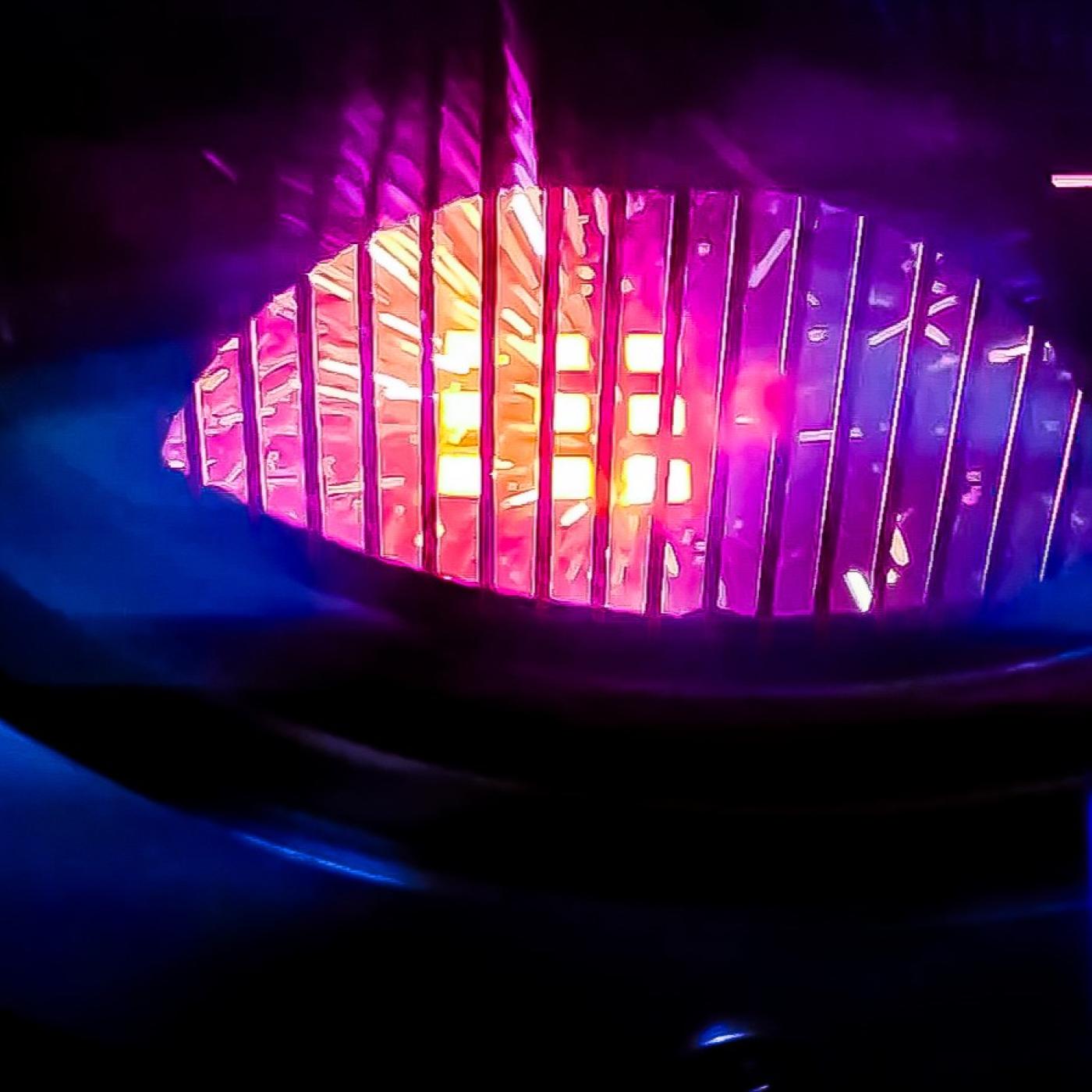
Filter News
Area of Research
- Advanced Manufacturing (1)
- Biology and Environment (12)
- Building Technologies (1)
- Clean Energy (64)
- Climate and Environmental Systems (1)
- Computational Biology (1)
- Computational Engineering (2)
- Computer Science (10)
- Energy Sciences (1)
- Fusion and Fission (5)
- Fusion Energy (7)
- Isotopes (5)
- Materials (22)
- Materials for Computing (3)
- Mathematics (1)
- National Security (5)
- Neutron Science (6)
- Nuclear Science and Technology (9)
- Nuclear Systems Modeling, Simulation and Validation (1)
- Quantum information Science (3)
- Supercomputing (20)
- Transportation Systems (2)
News Type
News Topics
- (-) Advanced Reactors (15)
- (-) Biomedical (22)
- (-) Computer Science (54)
- (-) Energy Storage (45)
- (-) Molten Salt (5)
- (-) Physics (20)
- (-) Transportation (48)
- 3-D Printing/Advanced Manufacturing (45)
- Artificial Intelligence (21)
- Big Data (26)
- Bioenergy (34)
- Biology (41)
- Biotechnology (7)
- Buildings (30)
- Chemical Sciences (20)
- Clean Water (20)
- Climate Change (41)
- Composites (12)
- Coronavirus (17)
- Critical Materials (14)
- Cybersecurity (9)
- Decarbonization (29)
- Environment (84)
- Exascale Computing (4)
- Fossil Energy (1)
- Frontier (4)
- Fusion (16)
- Grid (28)
- High-Performance Computing (21)
- Hydropower (8)
- Irradiation (2)
- Isotopes (17)
- ITER (4)
- Machine Learning (20)
- Materials (44)
- Materials Science (47)
- Mathematics (7)
- Mercury (7)
- Microscopy (20)
- Nanotechnology (18)
- National Security (19)
- Net Zero (5)
- Neutron Science (36)
- Nuclear Energy (34)
- Partnerships (2)
- Polymers (14)
- Quantum Computing (5)
- Quantum Science (12)
- Security (7)
- Simulation (13)
- Space Exploration (10)
- Statistics (1)
- Summit (8)
- Sustainable Energy (60)
Media Contacts

The Advanced Plant Phenotyping Laboratory at ORNL utilizes robotics, multi-modal imaging, and AI to enhance understanding of plant genetics and interactions with microbes. It aims to connect genes to traits for advancements in bioenergy, agriculture, and climate resilience. Senior scientist Larry York highlights the lab's capabilities and the insights from a new digital underground imaging system to improve biomass feedstocks for bioenergy and carbon storage.
After retiring from Y-12, Scott Abston joined the Isotope Science and Engineering Directorate to support isotope production and work with his former manager. He now leads a team maintaining critical equipment for medical and space applications. Abston finds fulfillment in mentoring his team and is pleased with his decision to continue working.

ORNL has partnered with Western Michigan University to advance intelligent road infrastructure through the development of new chip-enabled raised pavement markers. These innovative markers transmit lane-keeping information to passing vehicles, enhancing safety and enabling smarter driving in all weather conditions.

Jeremiah Sewell leads a team at ORNL, working on xenon-129 production for lung imaging. Reflecting on his career, Sewell views each opportunity as a "door" he steps through, leveraging over 25 years of experience in nuclear power and centrifuge operations to advance the facility’s mission.

Brian Sanders is focused on impactful, multidisciplinary science at Oak Ridge National Laboratory, developing solutions for everything from improved imaging of plant-microbe interactions that influence ecosystem health to advancing new treatments for cancer and viral infections.

Oak Ridge National Laboratory scientists have developed a method leveraging artificial intelligence to accelerate the identification of environmentally friendly solvents for industrial carbon capture, biomass processing, rechargeable batteries and other applications.

John Lagergren, a staff scientist in Oak Ridge National Laboratory’s Plant Systems Biology group, is using his expertise in applied math and machine learning to develop neural networks to quickly analyze the vast amounts of data on plant traits amassed at ORNL’s Advanced Plant Phenotyping Laboratory.

ORNL scientists develop a sample holder that tumbles powdered photochemical materials within a neutron beamline — exposing more of the material to light for increased photo-activation and better photochemistry data capture.

An international team using neutrons set the first benchmark (one nanosecond) for a polymer-electrolyte and lithium-salt mixture. Findings could produce safer, more powerful lithium batteries.

Canan Karakaya, a R&D Staff member in the Chemical Process Scale-Up group at ORNL, was inspired to become a chemical engineer after she experienced a magical transformation that turned ammonia gas into ammonium nitrate, turning a liquid into white flakes gently floating through the air.


